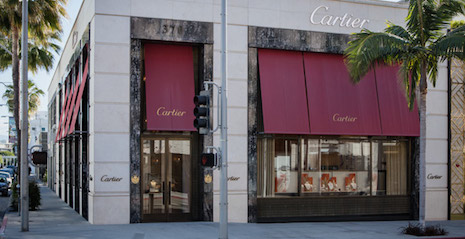 Cartier wants to appeal to consumers of all ages, not just millennials. Image credit: Cartier
Cartier wants to appeal to consumers of all ages, not just millennials. Image credit: Cartier
NEW YORK – Luxury apparel and accessories brands are finding new methods of engagement that balance their traditions with the changing priorities of luxury shoppers.
During a panel discussion entitled “Looking Past the Past - Taking Heritage Brands Into the Future” at Bloomberg's The Year Ahead in Luxury conference on Nov. 29, executives from Cartier and Hermès discussed strategies for appealing to today’s affluent consumers. With histories dating back to the 19th century, both heritage brands are competing with up-and-coming labels for tech-savvy shoppers.
“We want to get new clients no matter the age,” said Mercedes Abramo, president/CEO of Cartier North America, New York. “It’s a mindset, not an age.”
Modern engagement
Engaging experiences are still at the heart of luxury houses, Hermès president/CEO Robert Chavez told moderator and Fashion Tech Forum CEO Karen Harvey.
“You need reasons to bring people into bricks-and-mortar stores,” Mr. Chavez said. “It’s a great way to introduce new people to the brand and broaden your customer basis.”
Hermès' Carre Club. Image credit: Hermès
Whether in ecommerce or in-store, being consistent about Hermès' values of quality and craftsmanship is vital, explained the executive.
For instance, the French fashion group is exciting fans of its history with scarves in a new pop-up concept traveling to various cities. The Hermès Carré Club is giving guests an inside look at what it takes to create its iconic scarves (see story).
Hermès will often bring pop-ups to areas where there are no standalone boutiques to expand the brand’s reach.
Cartier has also experimented with its own pop-ups. This fall, the French jeweler hosted its first perfume pop-up shop to celebrate the launch of the Cartier Carat fragrance (see story).
Bricks-and-mortar locations still need to appeal to shoppers of all ages, however.
Cartier boutique. Image credit: Cartier
According to Cartier’s Ms. Abramo, many millennials engage with luxury brands through older female relatives, including mothers and aunts. That personal history shapes consumers’ emotional connections to high-end pieces.
“You remember why you purchased something or were given something,” she said. “We want to engage people so they do want to come in and bond with the brand.”
Luxury legacy
Neither Hermès nor Cartier has shied away from its heritage in its efforts to appeal to millennials.
For instance, Ms. Abramo believes smartwatches are not consistent with Cartier's image, but the maison welcomes other ways to reach broader audiences.
In the past, Cartier brought the bricks-and-mortar experience online with a digital holiday window display. Consumers could peek into interactive panes, which enabled them to see items in close-up, 360-degrees and shop from the display.(see story).
Cartier also teamed up with Net-A-Porter for an exclusive pop-up shop this past spring to bring the revived Panthère de Cartier timepiece to market (see story).
“We see technology as a way to make the customer experience more seamless,” Ms. Abramo said. “It’s about how to make the relationship stronger between the customer and us.”
Historically, sustainability is not a central pillar for either brand, but Mr. Chavez notes that environmentally-conscious consumers are more appreciative of items that will last for decades.
Many of Hermès' marketing efforts elaborate on its dedication to craftsmanship, as well as its deep ties to France.
This spring, the label brought its annual craftsmanship exhibit to Lyon, France, known historically as an important part of the silk industry, with which Hermès’ business is connected.
“Hermès Hors les Murs” gave consumers an opportunity to see how Hermès handbags, silk scarves, ties, watches and jewelry are created by artisans or attend workshops and roundtable discussions. Hermès also unveiled a new film regarding its Saint Louis brand, featuring glass workers and sculptures that craft the glassmaking brand’s products (see story).
“Younger clients are interested in the heritage because it is so unique in a startup world,” Mr. Chavez said. “Younger shoppers want to learn the stories.”


